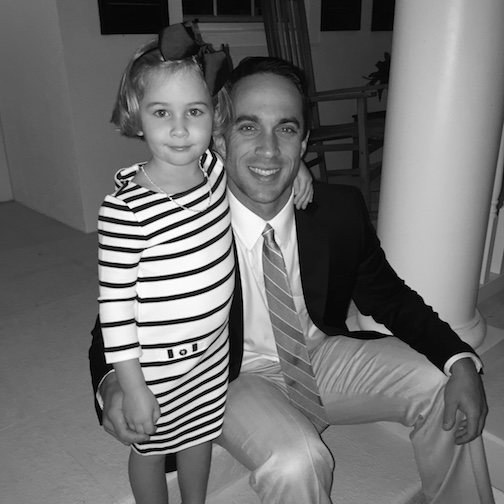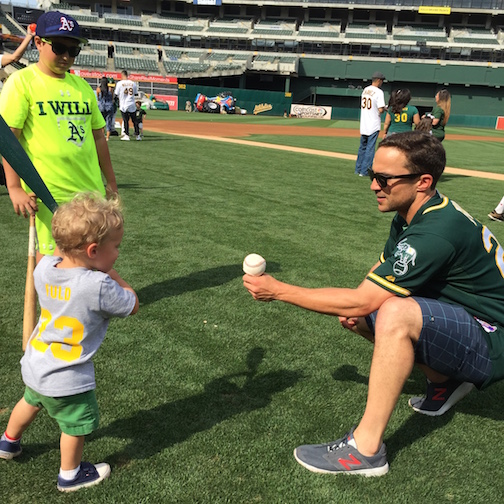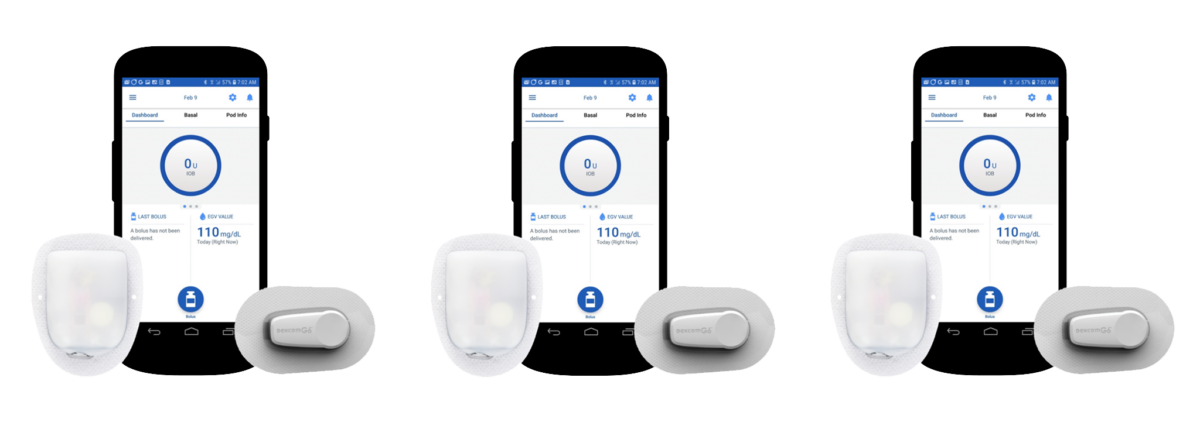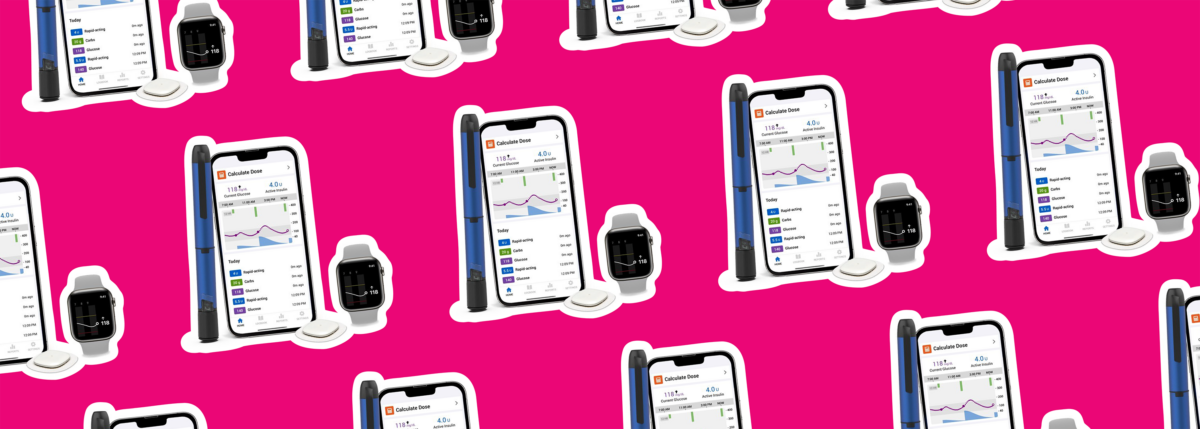Talking T1D with Sam Fuld: Major League Baseball Player and Dad
Written by: Alexi Melvin
5 minute read
May 24, 2018
“Did you know there’s a player on the Oakland Athletics who has Type 1 diabetes?” one of my friends asked me one day. I immediately called my dad (Oakland Athletics CEO Bob Melvin) and confirmed the news.

I had known who Sam Fuld was for a couple of years now, ever since he joined the Oakland Athletics in 2014.
“Did you know there’s a player on the A’s now with type 1?!” One of my friends asked me one day. I immediately called my dad (A’s manager, Bob Melvin) and confirmed the news. I suddenly felt even more proud to be connected to this team, which now housed a talented, successful athlete with type 1 diabetes.
I somehow went without meeting Sam in person for the next year and a half, but I kept up with him, and spoke to his lovely wife, Sarah, on numerous occasions. To my delight, I started writing for Beyond Type 1, and was given the opportunity to interview him in depth about his type 1 diabetes (T1D) routine as a professional athlete, and his experience caring for his four children while simultaneously caring for his type 1.
Sam recently underwent surgery on his arm and is finishing up some physical therapy at the ballpark while I wait in my dad’s office. Sam strolls in, says a quick “hello” to my dad and then we finally meet.
He eases back into the couch in my dad’s office and I ask about his shoulder operation, curious as to how his blood sugar levels were monitored throughout the nearly three hours of surgery. “My surgeon said, ‘Oh, you’ll be able to check yourself when you’re in the recovery room!'” Sam laughs, shaking his head. “But luckily the anesthesiologist was able to check me during the surgery,” he says. He adds that he went into the surgery a bit high as a precaution. “I scaled back on my Lantus the night before.”
Sam has been using Novolog and Lantus pens for some time, and notes that his regimen has worked very well for him thus far. “I tried (a pump) a couple of years back and kept getting all these malfunctions,” he says. I tell him that I recently experienced the same thing and promptly went back to pens. “My biggest nightmare was when I was playing and I would get some kind of malfunction,” he adds, “I felt so out of control.”
One advancement in diabetes technology that Sam is curious about, however, is the continuous glucose monitor (CGM). He asks me if I have one and I show him the Dexcom sensor/transmitter on my arm. “I want to try that, especially now that I’m hurt, it would be a good opportunity to test it out,” he says.
Sam was diagnosed with type 1 at the age of 10. He reflects on adapting to managing the disease fairly well. “My parents gave me a lot of freedom early on, but, you know, there was a balance. My mom can worry with the best of them. I could see that it had her rattled more than me. I was kind of a mature 10-year-old, luckily. And I was always kind of a math nerd, so being comfortable with numbers helped.”
He speaks about being diagnosed around an era where the stereotypes surrounding diabetes were just beginning to shift.
“I always think about Ron Santos, the Cubs third-baseman Hall-of-Famer. When I played for the Cubs, he was our radio guy so I got to know him. He had to hide [his type 1 diagnosis] when he played back around the sixties. He didn’t want to tell anybody because people would literally tell you that they didn’t think you could play.”
“By the time I was diagnosed,” he says, “that had changed. It’s still around, but it changed.”
Sam continues to lead his sports-centered diabetes camp at USF that he established back in 2011, and has plans to release a video urging coaches of young sports teams to educate themselves as much as possible about type 1, to ensure that all children with diabetes get an equal chance to play. “You can’t really blame the coaches for being uninformed,” he says, “They just don’t know.”
Along with playing in the Major Leagues, Sam plays the role of dad to four children, the oldest of which is 6 years old. I ask a question that I would never be able to guess the answer to: “Is it more difficult being a professional athlete with type 1 diabetes or being a dad with type 1 diabetes?”
Sam laughs. “That is a great question!” He takes a long moment to ponder.
“In a lot of ways, it is tougher being a dad!” He finally concludes. “Especially with young kids,” he adds. “You know, I really admire all the type 1 moms out there. I carry my (3-month-old) baby about ten percent of the time, and my wife is carrying him the other ninety percent. But you know—he’ll be screaming and sometimes it takes twenty minutes to calm him down, and I’ll need to check my blood sugar but I literally can’t. There are a lot of moments where your hands are tied.”
I ask if Sam has explained his disease to his kids at this point. “Yeah,” he says, “I mean, even my 2-year-old gets it on a very basic level. He will see a juice box or a bar laying around and he’ll say ‘Oh, this is for your blood sugar?'” He smiles. “I think he still thinks the disease is called ‘blood sugar’ and not ‘diabetes!'”
“Close enough,” I say.
“Obviously their understanding of it gets better and better as they get older, you know, my 6-year-old gets it. I definitely inform them as much as possible.”
Sam makes sure to give credit where credit is due to his wife. “You get a little thin skinned when you’re low around four young kids, so my wife definitely helps out. She’ll say, ‘Daddy is feeling low, let’s leave him alone, or maybe give him a back rub!'”
Sam admits that he feels much more in control when it comes to managing his type 1 at the ballpark. “There’s never a moment in the dugout where I can’t run back to the clubhouse and check my blood sugar or take some insulin,” he says.
“What about on the field?” I ask.
“Yeah, well, you just hope those innings aren’t too long!” He laughs.
 When asked about managing his routine while on the road vs. at home, Sam stresses that every day is different no matter where he is. “If I’m playing and I’m 0 for 4 and I get no action in the outfield, that’s a huge difference in activity level from hitting two doubles and making a bunch of running plays. It’s really tricky going from having an active night game and then turning around and going straight into a day game in 90-degree weather. That’s kind of when you really have to be conscious of being susceptible to lows.”
When asked about managing his routine while on the road vs. at home, Sam stresses that every day is different no matter where he is. “If I’m playing and I’m 0 for 4 and I get no action in the outfield, that’s a huge difference in activity level from hitting two doubles and making a bunch of running plays. It’s really tricky going from having an active night game and then turning around and going straight into a day game in 90-degree weather. That’s kind of when you really have to be conscious of being susceptible to lows.”
When traveling with the team, he adjusts his Lantus minimally as needed, staying conscious of the time changes. “At least it’s not like we’re traveling internationally,” he says, “At most it’s like a three hour difference.”
In terms of his diet, the outfielder definitely has strategies that help him be at his best.
“I’m always trying to minimize the variables, so I will try to eat the same things, and that you can control pretty well whether you are at home or on the road. Post-game I tend to let myself go just a little bit, knowing that the worst that could happen is that I go a little bit high in the middle of the night as opposed to something happening during a game.”
I ask him if he prefers to stick to a low-carb diet. “No, not necessarily,” he says. “Especially as an athlete, you need carbs! I eat oatmeal in the morning almost every day. I do a good enough job as it is with a high-carb diet, so I don’t see any reason to change.”
“For me, it’s the fats that kill me!” He adds. “If I have a few pieces of pizza at night, or a burger and fries, I go sky high throughout the night.”
“Have there been many moments when you’ve felt an intense low during a game?” I ask. At that moment, my dad breaks his silence from behind his desk.
“I notice when he’s a little bit low before he does sometimes,” he says with a knowing smile on his face.
“Yeah!” Sam laughs. “It happens, but not too often.”
“How do you notice that?” I press further.
“I just see that same kind of look that you get when you get low,” my dad says, in true “dad” form.
“I don’t think I know how I look when I’m low,” I say.
“Probably angry,” Sam muses. “That’s how I feel!”
Read Sam Fuld’s story on how Type 1 Diabetes Camp Changes a Major League Baseball Player’s Life.

Author
Alexi Melvin
Alexi Melvin is a freelance journalist and screenwriter based in the Bay Area. She was diagnosed with type 1 diabetes in 2003, and has been passionate about raising awareness ever since. Her other passions include film, animals and spiritual healing. Check out her Facebook page @ https://www.facebook.com/healingwithalexi/.
Related Resources

Already compatible with Dexcom’s G6 and G7 continuous glucose monitors (CGMs), the Omnipod 5 Automated...
Read more

The younger a person is diagnosed with type 2 diabetes, especially those with obesity, the...
Read more

The Oura Ring, which tracks things like sleep, heart rate, and activity, is joining forces...
Read more

